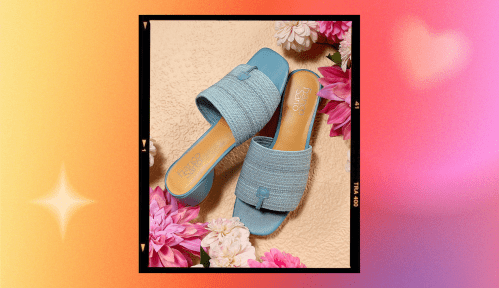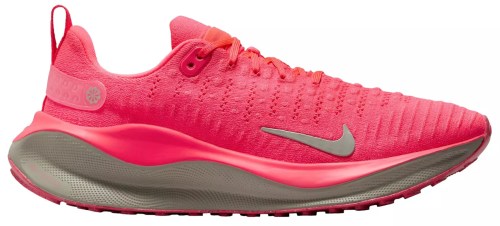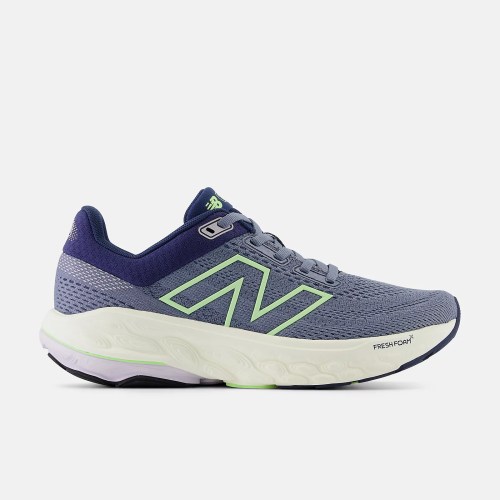Our editors independently select these products. Making a purchase through our links may earn Well+Good a commission
I recently spent time visiting a few old towns in Europe that could only be reached by long, uphill walks on uneven terrain. After one particularly challenging trek, I returned to my Airbnb, took off my socks, and was surprised to see a few small red sores on and around the big toe on my right foot. The sores weren’t bloody or blistered and didn’t hurt, and I had no idea how they got there. Once back in the States, I visited my podiatrist, who told me the sores were the result of overpronation, whereby my right foot rolls inward when I walk, and she prescribed custom orthotics as a fix.
Experts in This Article
body and posture experts, manual osteopath, chiropractor, myofascial release therapist, clinic director of the[fix], designer of dr LIZA shoes, and guest lecturer at OCAD University.
doctor of physical therapy
podiatrist and assistant professor of orthopedics at New York College of Podiatric Medicine
While my foot issue was minor, overpronation can be a much more serious problem for runners, especially new or recreational ones. “It has been estimated that over 50% of runners overpronate,” says Dr. Pamela V. Gekas of Rothman Orthopaedics. “Runners that overpronate and do not address the overpronation will develop injuries such as shin splints, heel and arch pain, plantar fasciitis, and tendonitis.”
That’s why wearing the correct running shoes is crucial to prevent overpronation. To help you out, we consulted a panel of experts for their guidance on what to look for in the best running shoes for overpronation, aka stability shoes, plus their top picks to suit every need and budget.
Best running shoes for overpronation, at a glance:
- Best overall: Brooks Adrenaline GTS-24
- Best budget: ASICS GT-1000 13
- Most stylish: On Cloudrunner 2
- Best for everyday runs: Brooks Ghost 16
- Best long-distance: ASICS Gel-Kayano 31
- Best for trails: Saucony Peregrine 15
- Best for pavement: Nike InfinityRN 4
- Best lightweight: Hoka Arahi 7
- Best for wide feet: New Balance Fresh Foam X 860v14
What is overpronation, and what causes it?
“Overpronation generally refers to the inward rolling of the foot while walking, particularly during the stance phase when the foot contacts the ground and transitions toward toe-off,” says Dr. Landon Uetz, a physical therapist at TeachMe.To. To put it more simply: “It’s a timing issue in which one's foot remains in the shock-absorbing phase much longer than it should,” says Dr. Samantha Landau, assistant professor at Touro New York College of Podiatric Medicine. While a certain degree of pronation is both normal and necessary for shock absorption, Uetz notes that overpronation may disrupt the alignment of the foot, ankle, knee, and hip.
But what causes overpronation? Dr. Liza Egbogah, foot expert and founder of dr LIZA shoes, explains that the condition can be attributed to several factors. “Overpronation can be caused by having flat feet or fallen arches, weak foot muscles, tight hip flexors, weak glute muscles, unsupportive or ill-fitting footwear, excessive weight, and overuse injuries,” she says. And while the condition may be common among runners, Landau stresses that “common does not mean normal.” In fact, says Uetz, “addressing it proactively can improve both performance and resilience.”
Do you need overpronation running shoes?
While a professional foot analysis can confirm whether you suffer from overpronation (many running shops offer gait assessments), there are many ways you can check for it yourself. “You might be overpronating if you notice that your arches collapse when you’re standing, walking, or running,” says Egbogah, who, along with RRCA-certified running coach Kristina Centenari, suggests also looking at the bottom of your shoes for clues. “Usually, the inner edge of the sole will show excessive wear and tear,” says Centenari.
The tilt of your shoe is another indicator. “Place the sneaker on a table and check if the shoe tilts inwards,” says Gekas. Another trick? Wet the soles, then stand on a dark piece of paper or cardboard. “With overpronation, there is a complete footprint with a flattened arch,” notes Gekas. Pain in the feet, knees, or hips is another common sign of overpronation, particularly with increased activity, adds Uetz.
Pro tips for combatting overpronation:
- 1.Build strength and flexibility. Strengthening intrinsic foot muscles, improving ankle mobility, and enhancing hip stability—especially gluteal control—can significantly reduce your reliance on passive structures to control pronation, says Uetz.
- 2.Add miles slowly: Both Egboah and Uetz recommend that runners increase their mileage gradually to give tissues time to adapt and prevent injuries.
- 3.Replace run-down shoes: Running shoes should be replaced every 259 – 500 miles, says Egbogah, as worn-out shoes will no longer provide enough support to prevent overpronation.
What to look for in running shoes for overpronation
When shopping for the best running shoes for overpronation, start by considering how you’ll use them. Are they for slow or fast runs? What type of surface will you be running on? Whatever your running needs are, there’s a shoe designed to match. Below are other important factors to keep in mind.
Comfort
First things first, ensure that the shoe fits your foot shape and movement pattern. “A shoe that offers stability should not create compensatory motion elsewhere,” says Uetz. “Comfort, which has a strong evidence base as a predictor of injury risk, should not be overlooked.”
Stability
Running shoes with a wide base and rocker shape provide natural stability and help reduce inward roll, says Centenari. But many stability shoes are built with a host of other features to help prevent overpronation as well. Egbogah and Centenari recommend a firm medial post in the inner side of the shoe. Typically made from dense materials like foam, rubber, or plastic, the medial post helps to keep the foot from rolling inward while running. A stiff heel counter in the rear of the shoe is also key, says Landau. This firm material keeps the heel stable and prevents it from slipping. Gekas also recommends additional stability features like siderails, which use materials like dense foam along the inner and outer sides of the shoe to reduce the rolling of the foot and stabilize the heel.
Cushioning
The best running shoes for overpronation have proper cushioning to distribute impact and reduce the risk of injuries. They should include extra padding in the midsole, says Gekas, and use higher-density foam. But Landau cautions that the thickness of the midsole, aka the stack height, should not be too far off the ground. Too much cushioning “makes the foot work harder, as it is sinking rather than progressing forward throughout the gait cycle,” she says. A stack height of 30 mm, or approximately one inch, is ideal. If you want a shoe with more cushioning, you’ll want more support features as well.
Once you find your ideal shoe, Landau recommends pairing it with custom orthotic inserts prescribed by a healthcare professional for optimal stability. “It's really important to wear prefabricated devices along with running shoes that have qualities that match that particular foot and patient's needs to neutralize the deforming forces that are causing the extremity and foot to overpronate,” she says. “Overpronation is a secondary cause of underlying structural issues.”
The 9 best running shoes for overpronation, according to pros:
Note: All of the shoes on our list are women’s sizes but are also available for men.
The Brooks Adrenaline GTS-24 has so many impressive features that it’s no surprise it’s our top pick for the best overall running shoe for overpronation. “It has a great forefoot rocker and low stack height,” Landau says of the shoe, which bends only in the ball of the foot and not the middle. “And it has GuideRails to secure the foot in a good position for side-to-side control during position changes when running.” Egbogah is also a fan of the GuideRails support system, as well as the GTS-24’s breathable mesh upper, while Centenari says the nitrogen-infused foam cushioning makes it “a versatile shoe for most runners—easy runs, long runs, tempo runs.” Available in a whopping 19 colors and four widths, the Brooks Adrenaline GTS-24 is, according to Landau, “one of the best long-distance, lightweight, sleek-designed running shoes” for overpronation.
Pros
- Good for short and long runs
- Wide shoe base provides stability
- GuideRails technology keeps foot centered while running
- Nitrogen-infused DNA LOFT v3 foam cushioning adapts to your stride
- Available in 19 colors and four widths (color selection varies by width)
Cons
- Less durability in mesh upper
- May not be soft enough for those who prefer plush cushioning
- High drop may feel steep
If you’re looking for the best stability shoe on a budget, it doesn’t get much better than the ASICS GT-1000 13, according to several of our experts. “This shoe has adaptive stability and support,” says Egbogah. “This allows for a smooth and balanced transition from foot strike to toe-off.” The GT-1000 13 is designed with a 3D GUIDANCE SYSTEM, which includes a wide shoe base, elevated sidewalls, and a wide heel with an increased curve. The midsole’s soft FLYTEFOAM cushioning adds more spring to your step, while the shoe’s PureGEL technology enhances shock absorption. Whether you’re sprinting through the city streets or hitting the trails, this inexpensive running shoe for overpronators is a great option. “It’s lightweight, offers sufficient stability for mild overpronators, and it’s under $100,” says Egbogah.
Pros
- Great value
- Comfortable
- 3D GUIDANCE SYSTEM includes wide shoe base, elevated sidewalls, and wide heel with increased curve for maximum stability
- PureGEL technology and FLYTEFOAM cushioning provide shock absorption and softer landings
- Available in 11 colors
Cons
- Not available in different widths
- Less cushioning and medial stability than higher-end shoes
- Not suitable for severe overpronators
Warning: On Cloudrunner 2 shoes are so stylish that you just might stop other runners in their tracks when you wear them. “It has a sleek design with a modern aesthetic for daily wear outside of running as well,” Centenari says of the sneaker, which comes in eight eye-catching color combos, including Pearl/Tangerine and Nimbus/Blueberry. But the Cloudrunner 2, which has a 100% recycled polyester upper and Helion superfoam sole, is so much more than just good looks. It’s a workhorse too, with built-in stability features to remedy overpronation, including a wider shoe base to minimize wobbling, shock-absorbing CloudTec cellular cushioning in the midsole, and a firm heel counter to keep the heel stable and secure. If you want a seriously stylish shoe that you can wear for running or just for kicks, this is it.
Pros
- Stylish design for everyday wear
- Plush tongue padding
- Helion superfoam midsole for softer strides
- CloudTec cushioning for maximum shock absorption
- Firm heel clip for extra stability and support
- Available in eight color combinations (three for wide version)
Cons
- Midsole is firmer than other shoes and may feel heavier
- Not suitable for severe overpronators
Running is a key form of exercise for many people, but not everyone is training for a marathon. Those who need a lightweight, quality shoe for light, daily runs should look to the Brooks Ghost 16. While the shoe’s modest stack height means your foot is closer to the ground, the midsole’s DNA LOFT v3 foam cushioning provides plenty of softness underfoot. The segmented Crash Pad sole adds additional comfort, absorbing shock and providing a smooth transition from heel to toe. And just to make sure your foot is secure, the Ghost 16 has a heel counter for extra stability. “It’s ideal for daily training, with balanced cushioning and support,” Uetz says of the shoe. “If you are willing to pay for quality, it's the Ghost.”
Pros
- Lightweight
- Durable
- Segmented midsole Crash Pad absorbs shock
- Nitrogen-infused DNA LOFT v3 foam cushioning adapts to your stride
- Available in nine colors and four widths (color selection varies by width)
Cons
- May require a brief break-in period
- Heel counter may feel rigid or stiff
A shoe that goes the extra mile is a must for long-distance runners. Enter: the ASICS Gel-Kayano 31, a favorite of Gekas, Centenari, and Egbogah. Though it has a clunky, non-rocker profile, it has plenty of bells and whistles that make it a superior pick for overpronators: a wide upper, midsole sidewalls, a firm heel counter, and excellent cushioning and shock absorption, thanks to ASICS’s PureGEL and FF BLAST PLUS ECO foam technology. Egbogah is a fan of the shoe’s 4D GUIDANCE SYSTEM, which, she says, provides adaptive stability for a more supportive and balanced stride. Centenari adds that the Gel-Kayano 31 is “ideal for marathon training or high-mileage weeks,” but, she cautions, for long-run or high-intensity workouts, “a shoe with a rocker that encourages more forward motion would be better.”
Pros
- Roomy upper
- Suitable for easy, longer runs
- 4D GUIDANCE SYSTEM for maximum stability
- PureGEL technology and FF BLAST PLUS ECO foam cushioning for impact absorption and softer landings
- Durable HYBRID ASICSGRIP outsole for various terrains
- Available in 14 colors (six for wide version)
Cons
- Somewhat clunky
- Limited stability for moderate to severe overpronators
- Not suitable for high-intensity runs
Running on trails can be especially challenging for overpronators, but the Saucony Peregrine 15 was built to tackle tricky terrain. “It has great traction with great stability,” Gekas says of the running shoe, which gets its snug, secure fit from its high-strength mesh upper and gusseted tongue. The Peregrine 15’s midsole is modestly cushioned with PWRRUN foam, allowing some ground feel while also providing comfort and impact absorption on rocky and uneven paths. The shoe’s PWRTRAC outsole adds another layer of security, with 5 mm lugs that lend a reliable grip on slick, dry, and muddy surfaces. Ready to be a trailblazer? Slip into the Peregrine 15.
Pros
- Snug, secure fit
- Extra eyelet for additional lacing near ankle
- PWRTRAC outsole with grippy 5 mm lugs for handling wet and dry terrain
- PWRRUN foam cushioning for a softer feel and maximum shock absorption
- High-strength mesh upper provides protection in high-abrasion areas
- Available in seven colors (only black for wide version)
Cons
- Can feel a bit heavy
- Some reviewers have experienced minor heel rub
Running on hard surfaces like concrete and asphalt can do a number on the body and make overpronation worse. That’s why you need a running shoe that's built to pound the pavement, like the Nike InfinityRN 4. “It has great shock absorption for both long and short runs,” Gekas says of the sneaker, which has bouncy ReactX foam cushioning in its midsole. The InfinityRN 4’s roomy toebox and grippy Waffle outsole provide additional stability, while the outsole’s curved shape ensures that your foot rocks smoothly as it strikes the ground. A Flyknit upper and foam collar give the InfinityRN 4 a secure fit, but note that shoe sizes tend to run small, so Nike recommends going a half-size up to avoid too snug of a fit.
Pros
- Stretchy Flyknit upper
- Roomy toe box
- Curved outsole provides traction on roads and helps foot rock smoothly through strides
- Grippy Waffle outsole for better traction on roads
- ReactX foam midsole cushioning for maximum shock absorption
- Available in 10 colors and two widths
Cons
- Snug fit; order a half-size up
- A bit heavy at 9.4 oz.
- Limited breathability
Some running shoes come with so many features that they weigh them down. Not so for the Hoka Arahi 7. “It is very lightweight,” Landau confirms. Gekas is a fan of the shoe’s firm midsole and wide base, while Centenari hails its overall design. “It’s cushioned and stable, and great for long runs on hard city surfaces,” she says. The Arahi 7 features high midsole walls as well as Hoka’s patented J-Frame technology, a J-shaped wedge of firm foam that runs from the inner arch to the heel to prevent the foot from rolling inward. Add to that a curved MetaRocker profile for a smooth heel-to-toe transition, and it’s easy to see why this is the best lightweight running shoe for overpronation.
Pros
- Lightweight
- J-Frame technology prevents foot from rolling inward
- Curved MetaRocker design for smooth heel-to-toe transition
- Foam midsole cushioning
- Available in 10 colors (five in wide version)
Cons
- Shoes run narrow
- Midsole is a bit firm
- No reflective elements for night running
If the shoe fits, wear it. But for runners with wide feet, that’s easier said than done. Finding a comfortable stability shoe that won’t pinch or cause blistering can be especially tricky, but the New Balance Fresh Foam X 860v14 is here to change that. “It has a roomy fit and wider toe box,” Centenari says of the shoe, which is available in four different widths. Besides a rocker profile to ease heel-to-toe transition, the 860v14 has a stiff heel counter and uses New Balance’s Stability Plane technology, running a hard plastic plate from the shoe’s inner arch to the heel to keep the foot stable. “It’s good for runners who need a lot of support,” says Gekas. For Uetz, the New Balance Fresh Foam X 860v14’s plush cushioning makes it especially appealing. “You get high-quality cushioning at an affordable price,” he says, adding that the shoes are comfortable for long runs.
Pros
- Roomy fit with wide toebox
- Stability Plane technology prevents foot from rolling inward
- Rocker profile
- Highly cushioned Fresh Foam X midsole
- Available in nine colors and four widths
Cons
- Cushioned midsole may lack the responsiveness of premium models
Sign up for the Well+Good SHOP Newsletter
Get exclusive deals on wellness, beauty, fitness, and food products that have been hand-picked by our editors.
Got it, you've been added to our email list.



















